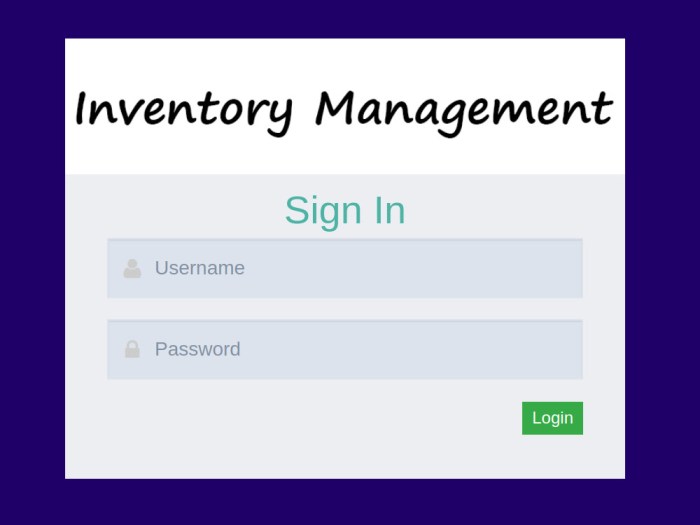SAAS Inventory Management Software revolutionizes how businesses track and manage their stock. This cloud-based solution offers a flexible and scalable approach, eliminating the need for complex on-premise systems and reducing the burden of manual data entry. By providing real-time insights into inventory levels, order fulfillment, and supply chain dynamics, SaaS inventory management software empowers businesses to optimize operations, minimize waste, and enhance profitability.
The accessibility and collaborative features further improve team efficiency and communication.
From small startups to large enterprises, the benefits are significant. Features like automated reporting, low upfront costs, and seamless integration with other business applications make SaaS inventory management a compelling choice for businesses of all sizes seeking to gain a competitive edge in today’s dynamic marketplace. The ability to access data anytime, anywhere, using any device, contributes significantly to improved decision-making and responsiveness to market changes.
In today’s fast-paced business environment, efficient inventory management is no longer a luxury but a necessity. Staying on top of stock levels, tracking orders, and managing warehouse operations can be incredibly complex, especially as your business grows. This is where SaaS (Software as a Service) inventory management software steps in, offering a powerful solution to streamline your operations and boost your bottom line.
This detailed guide explores the benefits, features, and considerations of choosing the right SaaS inventory management software for your specific needs.
Understanding SaaS Inventory Management Software
SaaS inventory management software provides businesses with a cloud-based platform to manage their entire inventory lifecycle. Unlike traditional on-premise software, SaaS solutions eliminate the need for expensive hardware and complex installations. Access is typically granted through a web browser or mobile app, allowing for anytime, anywhere access to your inventory data. This accessibility is a major advantage, particularly for businesses with multiple locations or remote teams.
Key Features of Robust SaaS Inventory Management Systems, Saas inventory management software
- Real-time Inventory Tracking: Maintain accurate stock levels with automated updates, minimizing stockouts and overstocking. This includes features like barcode and RFID scanning integration for efficient data entry.
- Order Management: Streamline the order fulfillment process from receiving orders to shipping, reducing processing time and errors. This often involves integration with e-commerce platforms and shipping carriers.
- Demand Forecasting: Analyze historical sales data to predict future demand, enabling proactive inventory planning and optimized purchasing decisions. Many systems utilize sophisticated algorithms for accurate forecasting.
- Warehouse Management: Optimize warehouse layout and operations with features like bin location tracking, picking lists, and receiving management. This enhances efficiency and reduces storage costs.
- Reporting and Analytics: Gain valuable insights into your inventory performance with comprehensive reports and dashboards. Track key metrics like inventory turnover, stock levels, and order fulfillment times.
- Supplier Management: Centralize communication and track orders with your suppliers, improving collaboration and ensuring timely deliveries.
- Integration Capabilities: Seamlessly integrate with other business systems, such as accounting software, CRM systems, and e-commerce platforms, creating a unified view of your business operations.
- User Roles and Permissions: Control access to sensitive data by assigning different roles and permissions to users, enhancing security and data integrity.
- Mobile Accessibility: Access your inventory data anytime, anywhere, through a mobile app, providing flexibility and real-time updates.
Benefits of Using SaaS Inventory Management Software
Implementing a SaaS inventory management solution offers numerous advantages for businesses of all sizes:
- Reduced Costs: Eliminate the need for expensive hardware, software licenses, and IT infrastructure. SaaS solutions typically operate on a subscription model, making them more cost-effective.
- Improved Efficiency: Automate manual processes, reducing errors and freeing up valuable time for other tasks. Real-time data and streamlined workflows improve overall productivity.
- Enhanced Accuracy: Minimize data entry errors and maintain accurate stock levels, preventing stockouts and overstocking. This leads to improved customer satisfaction and reduced waste.
- Better Decision-Making: Gain valuable insights into your inventory performance with comprehensive reports and analytics, enabling data-driven decision-making.
- Increased Scalability: Easily scale your inventory management system as your business grows, without needing to invest in new hardware or software.
- Improved Collaboration: Facilitate better communication and collaboration between different departments and teams, improving overall efficiency.
- Enhanced Security: Benefit from robust security measures implemented by the SaaS provider, protecting your valuable inventory data.
- Automatic Updates: Receive automatic software updates, ensuring you always have access to the latest features and security patches.
Choosing the Right SaaS Inventory Management Software
Selecting the appropriate SaaS inventory management software requires careful consideration of your specific business needs and requirements. Here are some key factors to consider:
- Business Size and Complexity: Choose a system that can handle your current inventory volume and anticipated growth. Consider the number of users, locations, and SKUs (Stock Keeping Units).
- Industry-Specific Features: Some SaaS solutions offer industry-specific features tailored to particular industries, such as retail, manufacturing, or wholesale.
- Integration Capabilities: Ensure the software integrates with your existing business systems, such as accounting software, e-commerce platforms, and CRM systems.
- User-Friendliness: Select a system with an intuitive interface that is easy to learn and use for your team.
- Pricing and Support: Compare pricing models and ensure the provider offers adequate customer support and training.
- Security and Compliance: Verify the software provider’s security measures and compliance with relevant industry regulations.
Frequently Asked Questions (FAQ)
- Q: What is the difference between SaaS and on-premise inventory management software?
A: SaaS inventory management software is cloud-based, accessible via the internet, while on-premise software requires installation and maintenance on your own servers. SaaS is generally more cost-effective and scalable. - Q: How much does SaaS inventory management software cost?
A: Pricing varies depending on the features, number of users, and storage capacity. Expect a monthly or annual subscription fee. - Q: Can I integrate my SaaS inventory management software with my existing systems?
A: Many SaaS solutions offer integration capabilities with popular accounting software (e.g., QuickBooks, Xero), e-commerce platforms (e.g., Shopify, Magento), and CRM systems (e.g., Salesforce). - Q: Is SaaS inventory management software secure?
A: Reputable SaaS providers invest heavily in security measures to protect your data. Look for providers with robust security protocols and compliance certifications. - Q: What are the key metrics I should track with inventory management software?
A: Key metrics include inventory turnover rate, stock levels, order fulfillment time, and carrying costs. These metrics provide insights into inventory performance and efficiency. - Q: How can I choose the best SaaS inventory management software for my business?
A: Consider your business size, industry, specific needs, integration requirements, budget, and user-friendliness. Research different providers and compare their features and pricing.
Conclusion
Implementing SaaS inventory management software is a strategic investment that can significantly improve your business operations. By streamlining processes, enhancing accuracy, and providing valuable insights, these solutions empower businesses to optimize their inventory management and achieve greater efficiency and profitability. Take the time to research and choose the right solution for your needs, and unlock the full potential of your inventory management.
References
- Investopedia – SaaS Definition
- Gartner – Supply Chain Management
- (Add more relevant links to reputable sources on inventory management and specific software solutions)
Call to Action: Saas Inventory Management Software
Ready to optimize your inventory management and boost your business efficiency? Explore our recommended SaaS inventory management software solutions and request a free demo today!
In conclusion, adopting SaaS inventory management software presents a strategic advantage for modern businesses. The streamlined processes, enhanced visibility, and data-driven insights it provides contribute directly to increased efficiency, reduced costs, and improved overall performance. By embracing this technology, businesses can confidently navigate the complexities of inventory management and focus on strategic growth initiatives. The ongoing evolution of these platforms ensures that businesses remain adaptable and competitive in a constantly changing landscape.
Questions and Answers
What are the typical costs associated with SaaS inventory management software?
Costs vary widely depending on the provider, features, and number of users. Expect subscription-based models with tiered pricing options.
How secure is my data with SaaS inventory management software?
Reputable providers employ robust security measures, including encryption and data backups, to protect sensitive information. Look for providers with ISO certifications and transparent security policies.

Source: valuewalk.com
Can SaaS inventory management software integrate with my existing accounting software?

Source: cloudinary.com
Many SaaS inventory management solutions offer seamless integration with popular accounting platforms. Check for compatibility with your specific software before choosing a provider.
What kind of training is required to use SaaS inventory management software?
Most providers offer user-friendly interfaces and online tutorials. Comprehensive training may be available depending on the chosen software and provider.
What happens if my internet connection goes down?
Functionality will be limited without internet access, though some systems offer offline capabilities. The extent of offline functionality varies by provider.